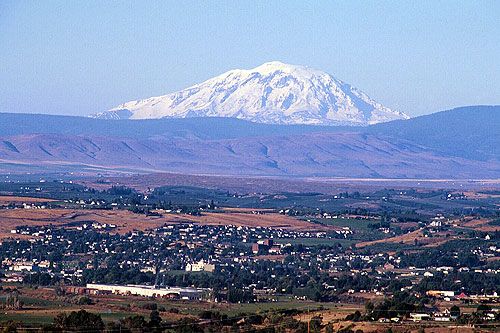Air quality studies
We sometimes conduct special studies to better understand air quality issues in a specific location and identify ways to improve air quality. When we develop these studies, we often partner with research facilities such as Washington State University.
A hazy Mount Rainier as seen from Yakima.
Ozone studies
Ozone high in the atmosphere protects people from the sun's harmful radiation. But ground-level ozone harms people and plants. It forms when nitrogen oxides and volatile organic compounds react with each other in sunlight and hot temperatures. This air pollution comes from vehicles, industry, and other sources. It creates smog.
Although Washington currently meets the national ozone standards, we continue to watch these areas closely:
- Western foothills of Cascade Mountains
- Tri-Cities area (Kennewick, Pasco, and Richland)
View this map in full screen with more functions.
Tri-Cities ozone precursor study
In Summer 2016, we partnered with Washington State University and Benton Clean Air Agency to conduct the Tri-Cities ozone precursor study. This study measured precursors of ozone, including nitrogen and volatile organic compounds at two sites in the Tri-Cities, as well as from a mobile platform that drove throughout the region.
What happens next
We're partnering with Benton Clean Air Agency to identify and implement reduction measures and raise public awareness. Find out what you can do to reduce ozone.
More information
- Tri-Cities Ozone Precursor Study Report (long)
- Studying ozone in the Tri-Cities (short)
- StoryMap (web map)
Particulate matter studies
One of the air quality issues facing Washington is particle pollution, especially those particles that are 2.5 micrometers (PM2.5) in diameter or smaller. These particles can pass through the throat and nose into the lungs.
People with heart or lung diseases, children, and adults 65 and older are more likely to be irritated by particle pollution exposure. These particles can harm health by causing:
- Earlier death in people with heart or lung disease
- Higher chance of heart attacks
- Airway irritation, coughing, difficulty breathing, and increased asthma symptoms
Read about the studies we have conducted.
Related links
Contact information
Beth Friedman
Atmospheric Scientist
beth.friedman@ecy.wa.gov
360-515-6728


